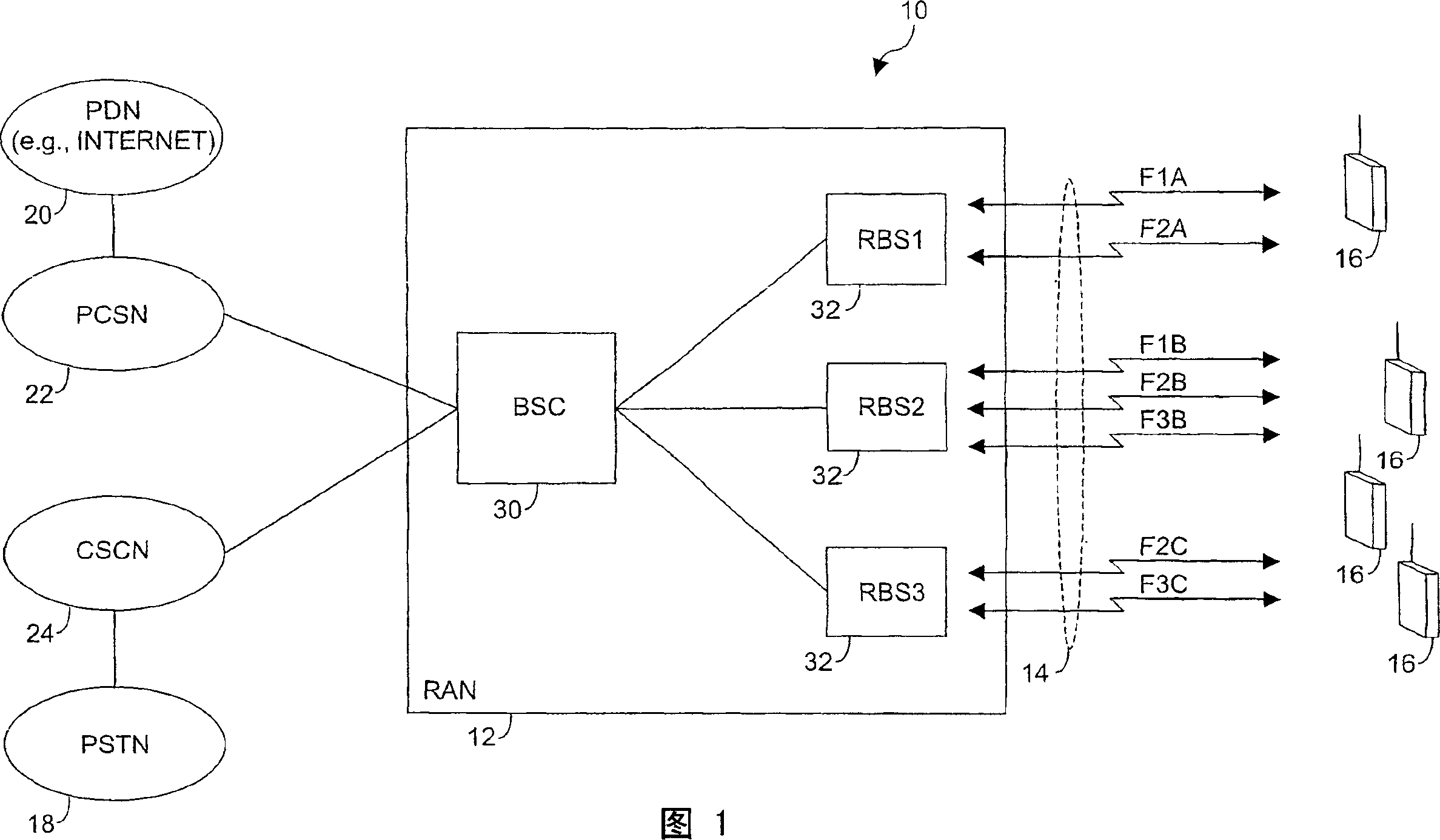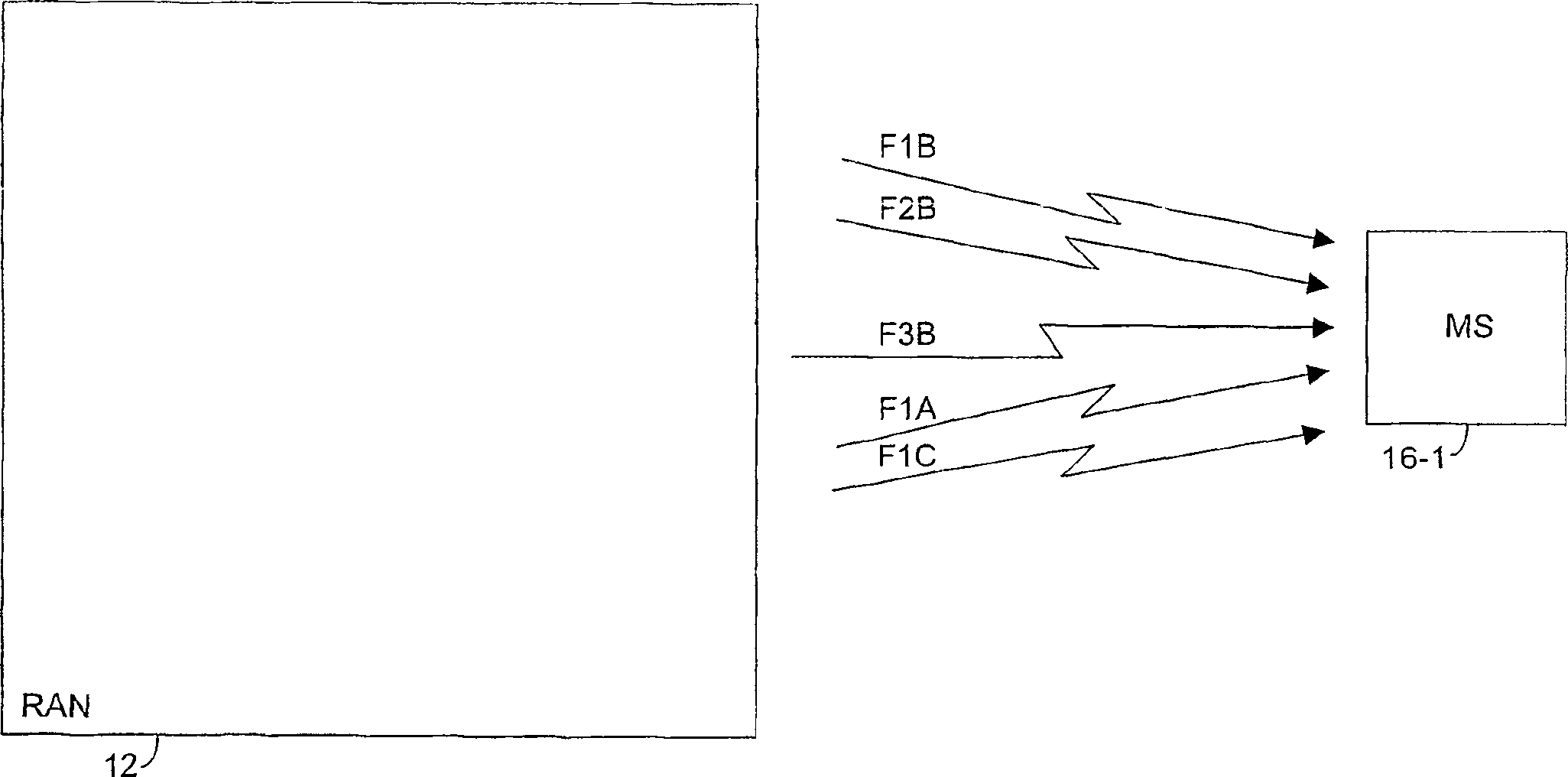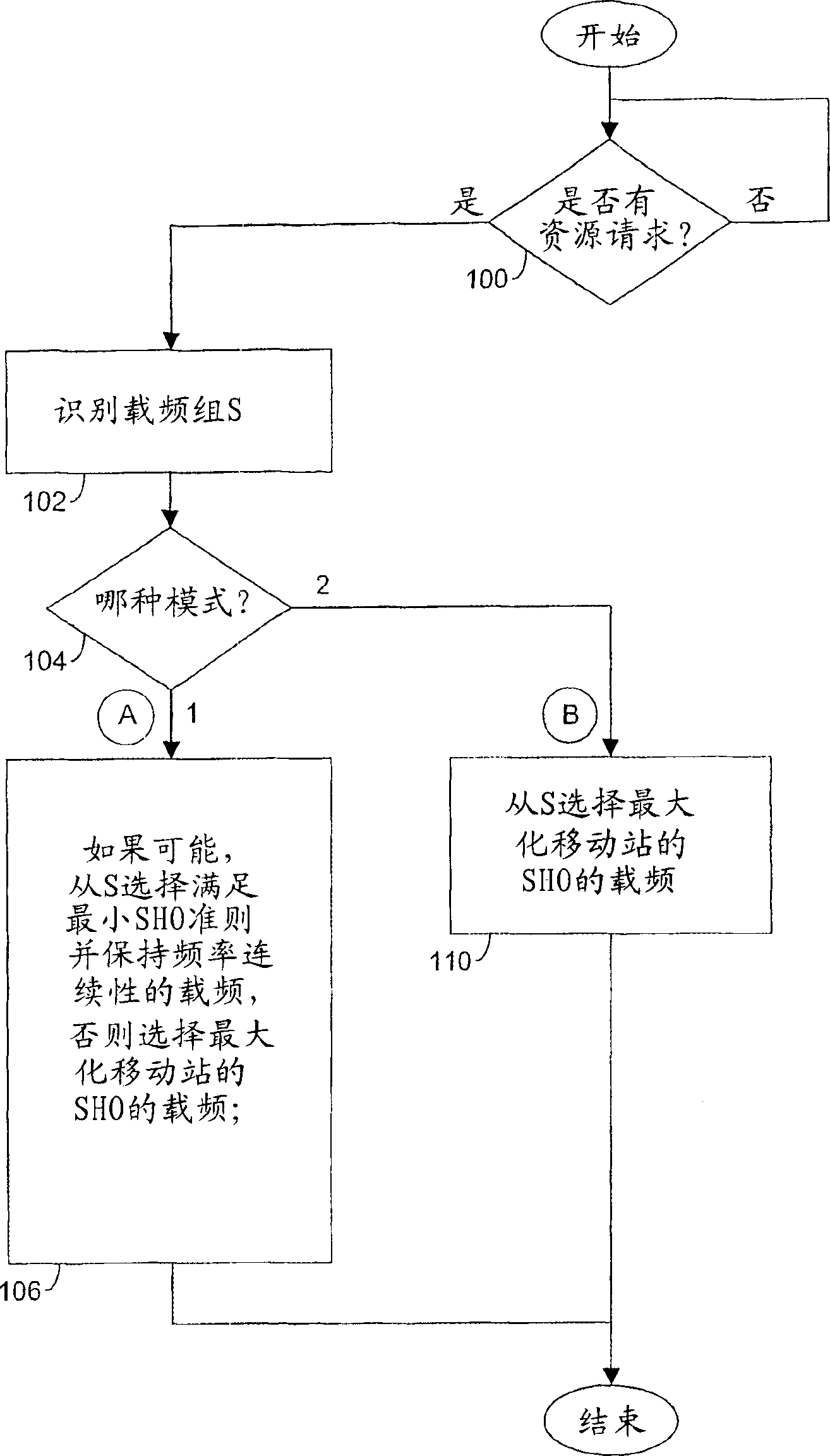Resource granting in multi-carrier CDMA systems
A multi-carrier and resource technology, applied in the direction of transmission system, digital transmission system, network traffic/resource management, etc., can solve the problems of not considering the availability of radio links, the loss of conventional networks, and the inability to point out the load across relative carrier frequencies, etc.
- Summary
- Abstract
- Description
- Claims
- Application Information
AI Technical Summary
Problems solved by technology
Method used
Image
Examples
Embodiment Construction
[0023] 1 illustrates an exemplary wireless communication network 10, such as an IS-2000 CDMA network, including a radio access network (RAN) 12 that provides a plurality of CDMA channels 14 for communicatively connecting a plurality of mobile stations 16 with one or A number of external networks, such as the Public Switched Telephone Network (PSTN) 18, and one or more Public Data Networks (PDN) 20, such as the Internet. Packet Switched Core Network (PSCN) 22 communicatively connects RAN 12 to PDN 20 , and Circuit Switched Core Network (CSCN) 24 likewise communicatively connects RAN 12 to PSTN 18 . With this exemplary arrangement, network 10 provides circuit-switched communications (eg, audio, fax) and packet-switched communications (eg, web browsing, streaming, email, etc.) to mobile stations 16.
[0024] The exemplary RAN 12 includes one or more base station controllers (BSCs) 30 each controlling one or more radio base stations (RBSs) 32 . In an exemplary embodiment, each BS...
PUM
 Login to View More
Login to View More Abstract
Description
Claims
Application Information
 Login to View More
Login to View More - R&D Engineer
- R&D Manager
- IP Professional
- Industry Leading Data Capabilities
- Powerful AI technology
- Patent DNA Extraction
Browse by: Latest US Patents, China's latest patents, Technical Efficacy Thesaurus, Application Domain, Technology Topic, Popular Technical Reports.
© 2024 PatSnap. All rights reserved.Legal|Privacy policy|Modern Slavery Act Transparency Statement|Sitemap|About US| Contact US: help@patsnap.com










